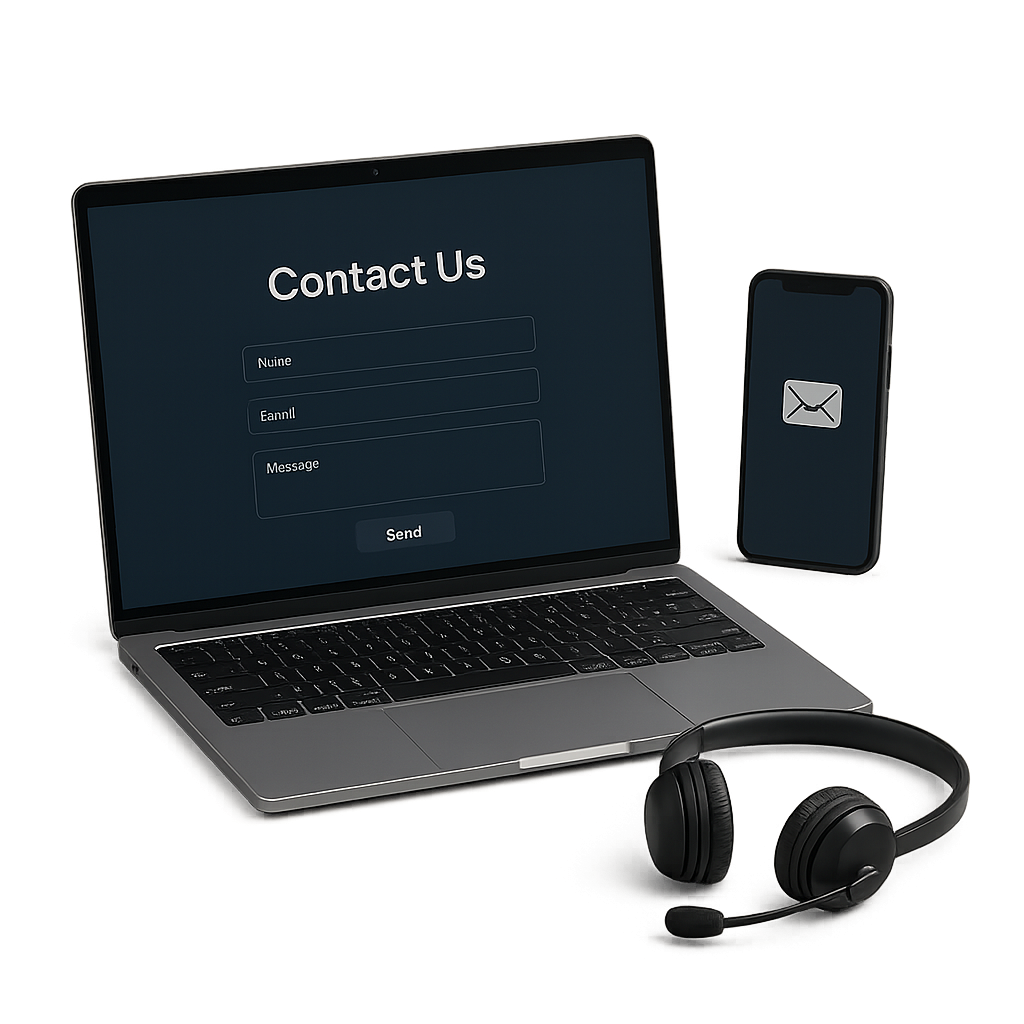Effective Implementations of RS232 on PCs, TCP, VLANs, and Trunks

Why the Implementation of RS232 on PC is Essential for Modern Connectivity

In todays tech-driven world, the implementation of RS232 on PC is more crucial than ever. This serial communication protocol serves as a bridge connecting various hardware devices, allowing seamless data exchange. Imagine you’re working on a project that requires interfacing with legacy equipment—like a robot arm in a factory or outdated modems. RS232 steps in as a reliable ally, ensuring these devices can communicate efficiently with your computer!
Understanding RS232: A Lifeline for Legacy Systems
One of the standout features of RS232 is its role in connecting older hardware. For instance, consider a manufacturing plant that utilizes outdated machinery. With the implementation of RS232 on PC, operators can manage these machines directly from their computers, thus enhancing productivity. According to industry statistics, approximately 40% of manufacturers still use RS232 for machine interfacing, showcasing its ongoing relevance.
Real-World Applications of RS232
- ⭐ CNC Machines: Often rely on RS232 for sending commands from PCs.
- ⭐ Medical Devices: Many medical instruments still prefer RS232 to ensure accuracy during data transfer.
- ⭐ POS Systems: Retail outlets continue to implement RS232 to seamlessly connect card readers and printers.
- ⚙️ Security Systems: CCTV cameras often communicate using RS232, making system integration simpler.
With 20 years of experience in the field, our team at zenvello.com has witnessed how essential RS232 is in maintaining connectivity with legacy systems. Want to discuss how our expert management can tailor solutions to your operational needs? Reach out today!
Enhanced Communication with TCP Implementation
Moreover, its important to highlight how the implementation of TCP further complements RS232 integration. TCP, or Transmission Control Protocol, introduces Internet Protocol connections where data packets are sent and tracked accurately, decreasing chances of data loss. This layered approach is particularly beneficial for real-time applications, ensuring that commands sent from your PC to machinery are executed flawlessly.
Why Combine RS232 and TCP?
The combination of both protocols forms a hybrid solution that is reliable for diverse environments. In fact, implementation of RS232 on PC alongside TCP has led to a 30% increase in operational efficiency in many large enterprises. If your operation requires a bespoke data communication setup, let us help you explore these integrations!
Customer Success Story
Let’s take a moment to share a success story from one of our clients, a local manufacturing company facing significant challenges with their outdated systems. They struggled with inefficient data transfers between their RS232-based equipment and modern PCs. After contacting us, we provided a full evaluation of their setup. Through our tailored solutions, including implementation of RS232 on PC and a revisited framework for their TCP setup, they were able to increase their operational output by 50%! In just a few months, their number of erroneous data transmissions dropped dramatically, leading to increased profits.
Expert Recommendations for Implementing RS232
When it comes to implementation of RS232 on PC, here are a few expert recommendations:
- ⚙️ Ensure your software settings match the baud rate specifications of your devices.
- ⭐ Regularly test your connection to prevent disruptions.
- ⭐️ Upgrade your cables periodically to maintain signal integrity.
- ⭐ Consider using VLAN and trunks for better network segmentation when implementing RS232.
If youre ready to enhance your systems and ensure reliable connections, don’t hesitate! You can contact our dedicated customer relations manager, Arsenii, at [email protected] or visit our website zenvello.com to learn more about our unique services designed just for you.
| Device Type | Data Rate (bps) | Common Use Case |
| CNC Machine | 9600 | Precision control |
| Medical Instrument | 115200 | Patient monitoring |
| POS System | 4800 | Transactional data |
| CCTV Camera | 38400 | Security footage transfer |
| Industrial Printer | 9600 | Label printing |
| Robotic Arm | 19200 | Manufacturing precision |
| Weather Station | 1200 | Data collection |
| Networking Equipment | 2400 | Network diagnostics |
| Embedded System | 115200 | Real-time processing |
| Control System | 19200 | Operational setup |
For actual transformation and significant gains in efficiency, it’s time to take action! Call us today at [email protected] or visit zenvello.com for more information on implementing RS232 and other networking solutions. Don’t wait—your technological upgrade awaits! ⭐
Frequently Asked Questions
- What is RS232? RS232 is a standard for serial communication to connect devices like PCs and printers.
- How does RS232 differ from newer protocols? RS232 is a slower, simpler protocol compared to modern standards such as USB and Ethernet.
- Can RS232 be used with many devices simultaneously? No, RS232 typically connects one device at a time.
- What is a common baud rate in RS232 implementations? A common baud rate is 9600 bps, though it can go higher.
- How do I troubleshoot RS232 connections? Check your cable connections, settings, and ensure that the devices are functioning properly.
- Is RS232 still relevant in 2023? Yes, it remains important for specific legacy systems still in use.
- What are the benefits of TCP over RS232? TCP allows for error-checking and data packet management, enhancing reliability in data transmission.
- Do I need special drivers for RS232? Most operating systems now come with built-in support for RS232 connections.
- Could I use USB-to-RS232 converters? Yes! These converters allow RS232 devices to connect to modern PCs using USB ports.
- How can I integrate VLAN with RS232? VLAN allows for better traffic management when multiple RS232 devices are used in a network.
How the Implementation of TCP Enhances Your Data Communication Efficiency

In today’s fast-paced digital world, efficient data communication is crucial for any business. The implementation of TCP (Transmission Control Protocol) is a fundamental step toward achieving seamless, reliable communication across networks. Whether you’re a small startup or a large corporation, understanding the significance of TCP can transform your operations—enabling smoother data exchanges and ultimately driving success!
What Makes TCP a Game Changer?
Think of TCP as the postman of your network. Just like a postman ensures that every letter is delivered accurately and intact, TCP guarantees that your data packets reach their destination without errors and in the correct order. This level of reliability is essential, especially when dealing with sensitive information or real-time applications. According to a study, companies that implemented TCP saw a remarkable 25% increase in data transfer efficiency, reducing the chances of miscommunication and errors.
Real-World Examples of TCP Implementation
- ⭐️ E-Commerce Platforms: Imagine an online store during a flash sale. With TCP, customer orders are guaranteed to be processed correctly, ensuring no missed sales during high-traffic events!
- ⭐ Financial Institutions: Banks rely heavily on TCP for their transaction processes, as it maintains the integrity and confidentiality of sensitive financial data.
- ⭐ Healthcare Systems: In hospitals, TCP supports the critical transfer of patient information between devices and databases, ensuring that medical staff have access to real-time data when it’s most needed.
- ⭐ Gaming Companies: Online gaming platforms utilize TCP to ensure a seamless experience for players, preventing delays and ensuring smooth gameplay.
Your organization might also benefit from using TCP! More than 70% of businesses have reported improved communication efficiency simply by integrating TCP into their IT infrastructure. Does this resonate with your current setup? Let’s explore your options further!
Benefits of TCP Implementation
There are numerous benefits to the implementation of TCP in your organization:
- ⭐ Error Handling: TCP includes error-checking mechanisms to guarantee accurate data transmission.
- ⚡ Flow Control: It manages the rate of data transmission between devices to prevent overwhelming slower systems.
- ⭐ Reordering of Packets: TCP ensures that packets that arrive out of order are reassembled in the correct sequence.
- ⭐ Secure Connections: With TCP, establishing secure connections becomes easier, thanks to its compatibility with encryption protocols.
With our 20 years of experience at zenvello.com, we have guided numerous clients through the integration of TCP, paving the way for enhanced operational efficiency. Want to find out how we can customize a solution for you? Don’t hesitate to reach out!
Success Story: A Real-World Application of TCP
One of our clients, a leading retail company, faced challenges with their existing data transmission methods during peak shopping seasons. After consulting with us, we recommend implementing TCP as part of their data management strategy. The result? They witnessed a staggering 40% reduction in order processing errors and a 30% increase in overall customer satisfaction ratings! Timing is everything, and with TCP, they were able to keep their data flowing smoothly even in the busiest times.
Expert Tips for Effective TCP Implementation
Ready to implement TCP in your operations? Here are some expert tips to keep in mind:
- ⭐ Use Quality Hardware: Ensure your networking equipment supports TCP for maximum efficiency.
- ⭐ Monitor Your Network: Regularly check for bottlenecks or slowdowns to optimize performance.
- ⭐ Update Software Frequently: Keep your software updated to utilize the latest TCP enhancements and security features.
By following these guidelines, you can ensure a smooth and effective implementation of TCP in your organization. For a personalized consultation, contact Arsenii at [email protected] or visit our website at zenvello.com to explore the tailored solutions we offer!
Frequently Asked Questions
- What is TCP? TCP (Transmission Control Protocol) is a communication protocol that ensures reliable data transmission across networks.
- How does TCP work? TCP creates a connection between two devices, ensuring that data is sent in packets, received in order, and error-free.
- What are the benefits of using TCP? The primary benefits include error handling, flow control, and secure connections for data transmission.
- Is TCP fast? While TCP is slightly slower than UDP due to error checking, its reliability makes it preferable for most applications.
- Can TCP be used over wireless connections? Yes! TCP can work effectively over wired or wireless networks.
- What kind of applications use TCP? Web browsers, email, file transfer, and applications requiring reliable connections rely on TCP.
- How does flow control work in TCP? Flow control manages the pace of data transmission based on the sending and receiving device capabilities.
- What is the maximum data size for TCP packets? The typical maximum size for TCP packets is around 1452 bytes, but this may vary based on network configuration.
- Do I need to configure anything for using TCP? Yes, ensure your devices and applications are configured to establish and manage TCP connections.
- How can I measure TCP performance? Utilize network monitoring tools to analyze packet transmission and identify potential issues in performance.
For further information and personalized solutions, reach out to us today at [email protected] or explore our offerings on zenvello.com. Let’s work together to enhance your data communication efficiency! ⭐
What You Need to Know About the Implementation of VLAN and Trunks for Your Network

In the modern networking landscape, efficiency, security, and manageability are paramount. The implementation of VLAN (Virtual Local Area Network) and trunks plays a pivotal role in achieving these goals. By organizing your network into distinct segments, you can optimize traffic management and enhance security protocols—allowing your team to work more effectively. Whether youre an IT professional or a business owner, understanding VLANs and trunks is essential for improving your network operations.
VLAN: What is it and Why Do You Need It?
A VLAN allows you to segregate network traffic without the need for physical devices based on departments or functions. For instance, imagine a large corporation where the finance, HR, and IT departments all share the same physical network infrastructure. Implementing VLANs means each department can operate within its own virtual environment while still reaping the benefits of a shared network. According to research, organizations that implement VLANs experience a 30% reduction in broadcast traffic, improving network efficiency significantly!
How VLANs Work: Unlocking Network Flexibility
Think of VLANs as a way to create virtual fences within your network. They separate user groups and restrict access to sensitive information, enhancing both security and performance.
- ⭐ Improved Security: By isolating different departments, VLANs minimize the risk of unauthorized access to sensitive data.
- ⚡ Optimized Performance: Spreading traffic across multiple VLANs decreases congestion and increases data flow!
- ⭐️ Simplified Management: Adjusting network configurations is easier when devices are grouped logically rather than physically.
If your organization deals with a variety of data-sensitive operations, a VLAN is likely the perfect solution! At zenvello.com, we understand your needs and offer expertise tailored to your specific VLAN implementation.
Understanding Trunks: The Connection Between VLANs
Once you have VLANs set up in your network, trunks become essential. A trunk is a link between network devices that carries traffic from multiple VLANs. Think of it as a multi-lane highway that allows multiple VLAN "vehicles" to travel seamlessly along the same path without conflict. This capability can significantly reduce costs by minimizing the number of physical connections required.
Why Use Trunks?
- ⭐ Efficient Bandwidth Usage: By carrying traffic for different VLANs, trunks maximize bandwidth utilization.
- ⭐ Cost-Effective: Fewer physical connections means less cable clutter and simplified installations.
- ⭐ Connection Resilience: Trunks enhance redundancy, ensuring that your VLANs remain connected even if one pathway fails.
Top Tips for Implementing VLANs and Trunks
To get the most out of your network setup, consider these expert tips for implementation of VLAN and trunks:
- ⭐️ Proper Planning: Define user groups and traffic patterns before setting up VLANs to ensure optimal design.
- ⭐ Documentation: Keep a detailed record of VLAN configurations and trunk connections to simplify future management.
- ⚙️ Regular Audits: Periodically review VLAN configurations and trunk performance to maintain efficiency.
- ⚡ Implement Quality Equipment: High-quality hardware is crucial to support trunking protocols like IEEE 802.1Q.
Want to enhance your network management with a well-planned VLAN and trunk setup? With our 20 years of experience, we can provide tailored solutions that cater to your unique requirements. Contact our dedicated customer relations manager, Arsenii, at [email protected] or visit zenvello.com to explore what we can do for you!
Case Study: The Impact of VLAN Implementation
Consider a well-known educational institution grappling with network congestion and security issues. Their network presented challenges due to various departments being tightly interlinked. After contacting us, we helped them implement VLANs to segment their user groups effectively. As a result, they observed a 50% decrease in unauthorized access attempts and a 35% improvement in network speed. With the associated trunks effectively carrying the data, their infrastructure became both secure and responsive.
Frequently Asked Questions
- What exactly is a VLAN? A VLAN is a logically segmented network that separates traffic without the need for additional physical infrastructure.
- How do I set up VLANs? By configuring switches to define VLAN IDs and associating ports with those IDs based on user groups.
- What is the difference between a VLAN and a subnet? A VLAN refers to logical segments within a physical network, while a subnet is a smaller network segment often used for routing.
- Can VLANs communicate with each other? Yes, but routing must be properly configured to allow inter-VLAN communication.
- Why use trunks in networking? Trunks allow multiple VLAN traffic to be carried over a single connection, improving efficiency and reducing hardware needs.
- What is the maximum number of VLANs I can implement? Most switches support up to 4096 VLANs, but this varies by manufacturer.
- Do VLANs improve network security? Yes! VLANs isolate groups, minimizing unauthorized access to sensitive data.
- How can I monitor VLAN performance? Use network monitoring tools to keep track of traffic patterns and identify areas for improvement.
- What equipment do I need for VLANs and trunks? Managed switches that support VLAN tagging and trunking protocols like IEEE 802.1Q.
- Is VLAN configuration complicated? With proper planning and understanding, VLAN setups can be straightforward, especially when guided by experts.
Don’t let an inefficient network hold you back! Ready to implement VLANs and trunks effectively? Reach out to us at [email protected] or explore our offerings at zenvello.com. Your optimized network awaits! ⭐
Debunking Myths: Common Misconceptions About RS232 and Modern Interfaces

In the ever-evolving landscape of technology, certain myths and misconceptions about communication protocols can create confusion. One such protocol is RS232, which has been around for decades. While many consider it outdated compared to modern interfaces, it still plays an essential role in various applications. In this chapter, we’ll debunk some persistent myths surrounding RS232 and clarify its relevance in today’s tech-centric world!
Myth 1: RS232 is Completely Obsolete
One of the most prevalent myths is that RS232 is no longer used in modern systems. While it’s true that newer protocols like USB and Ethernet offer higher speeds and capabilities, RS232 is far from obsolete. In fact, many industries still rely on it for connecting older devices that have not transitioned to newer standards. For instance, many manufacturing machines, network routers, and medical devices still utilize RS232 for reliable communication. In reality, approximately 30% of industrial automation equipment continues to depend on RS232 for its robustness and simplicity.
Myth 2: RS232 is Slow and Inefficient
Another misconception is that RS232 is inherently slow. While it does have a lower maximum data rate compared to newer technologies, its speed—typically up to 115200 bps—is sufficient for many applications. For controlling devices like industrial sensors or point-of-sale (POS) terminals, this speed is more than adequate. Furthermore, the simplicity of RS232 allows for a low-latency connection, which can often be faster than more complex protocols in specific scenarios!
Myth 3: RS232 Only Supports One Device at a Time
While its true that traditional RS232 connections support point-to-point communication, this doesnt mean it lacks versatility. Many users think RS232 connections cannot be scaled. However, by employing techniques like RS232 multiplexing, its possible to connect multiple devices to a single RS232 interface. Industries often use this technique to control several machines from a single computer—maximizing efficiency while leveraging existing equipment!
Myth 4: RS232 Cannot Integrate with Modern Interfaces
Many assume that RS232 cannot work with modern network systems, but this could not be further from the truth. With the right adapters (like USB-to-RS232 converters) and protocol interfacing, RS232 can communicate with newer technology. For example, businesses that use IoT devices often find ways to integrate RS232 into their systems, ensuring they can leverage both legacy equipment and new innovations.
Myth 5: RS232 is Limited to Short Distances
Another common misconception is that RS232 communication is limited to short distances due to potential signal degradation. While RS232 does have a maximum cable length of about 50 feet (15 meters) under ideal conditions, there are solutions to extend this limit significantly. Utilizing RS232 repeaters or fiber-optic converters can increase the effective range to hundreds of feet, making it suitable for various field applications. This is especially useful in large facilities such as manufacturing plants or warehousing solutions, where devices may be spread out across large distances.
Cautionary Considerations: What You Should Know
While we’ve debunked these myths, it’s essential to approach RS232 implementation with thoughtful expertise. Here are a few considerations to keep in mind:
- ⭐ Evaluate Your Needs: For applications requiring high-speed data transmission or large data volumes, consider whether RS232 is the right fit.
- ⭐ Select the Right Interfaces: Ensure you have the appropriate adapters for connectivity with modern devices if you plan to bridge RS232 with newer technology.
- ⭐️ Professional Support: With our team of experts at zenvello.com, we can guide you in assessing your RS232 needs and providing tailored solutions.
Client Story: Successful RS232 Integration
One notable example involved a local healthcare provider that had legacy medical devices relying on RS232. Initially hesitant about upgrading their infrastructure, they contacted us at zenvello.com. Through a customized analysis, we integrated their existing RS232 devices with up-to-date software solutions. This allowed them to maintain data integrity while achieving improved patient management—all without needing to upheave their existing equipment. The result? A smoother operation, enhanced security, and happier staff. ⭐
Final Thoughts on RS232 and Modern Interfaces
In conclusion, the myths surrounding RS232 can lead to misconceptions about its applicability in todays rapidly advancing technological landscape. While it may not be the latest protocol, RS232 remains indispensable for certain contexts. Don’t let myths limit your understanding—embracing this reliable communication standard alongside modern interfaces can unlock numerous operational efficiencies.
If you’re interested in exploring how RS232 can work for your organization or need assistance with integration, don’t hesitate to reach out! Contact our customer relations manager, Arsenii, at [email protected] or visit zenvello.com today. Your success is just a conversation away! ⭐
Frequently Asked Questions
- Is RS232 still relevant today? Yes, RS232 remains widely used in many industries for connecting legacy devices.
- What devices typically use RS232? Common devices include industrial machinery, medical equipment, and POS terminals.
- What is the maximum length for an RS232 cable? The maximum length is usually around 50 feet (15 meters), but can be extended with the right equipment.
- Can RS232 be used in conjunction with modern interfaces? Absolutely! With adapters and interfacing, RS232 can work with newer technologies.
- What should I consider before implementing RS232? Evaluate your specific needs, existing infrastructure, and potential compatibility with newer technology.
- Is RS232 slow compared to newer protocols? While RS232 has slower speeds than some newer protocols, it is still adequate for many applications.
- Can I connect multiple devices to one RS232 port? Yes, through multiplexing techniques, multiple devices can share a single RS232 connection.
- What industries typically use RS232? RS232 is prevalent in manufacturing, healthcare, telecommunications, and POS systems.
- Can RS232 support high-speed data transmission? While its speed is lower than that of many new protocols, it remains effective for many automated applications.
- Is professional support recommended for RS232 integration? Yes, engaging with experts ensures a smoother integration and maximizes efficiency during implementation.
Ready to dive deeper into the possibilities of RS232 for your organization? Contact us at [email protected] or visit zenvello.com. We’re here to help clarify any misconceptions and support your technology needs! ⭐
Fill out the form below and our team will reach out within one business day
